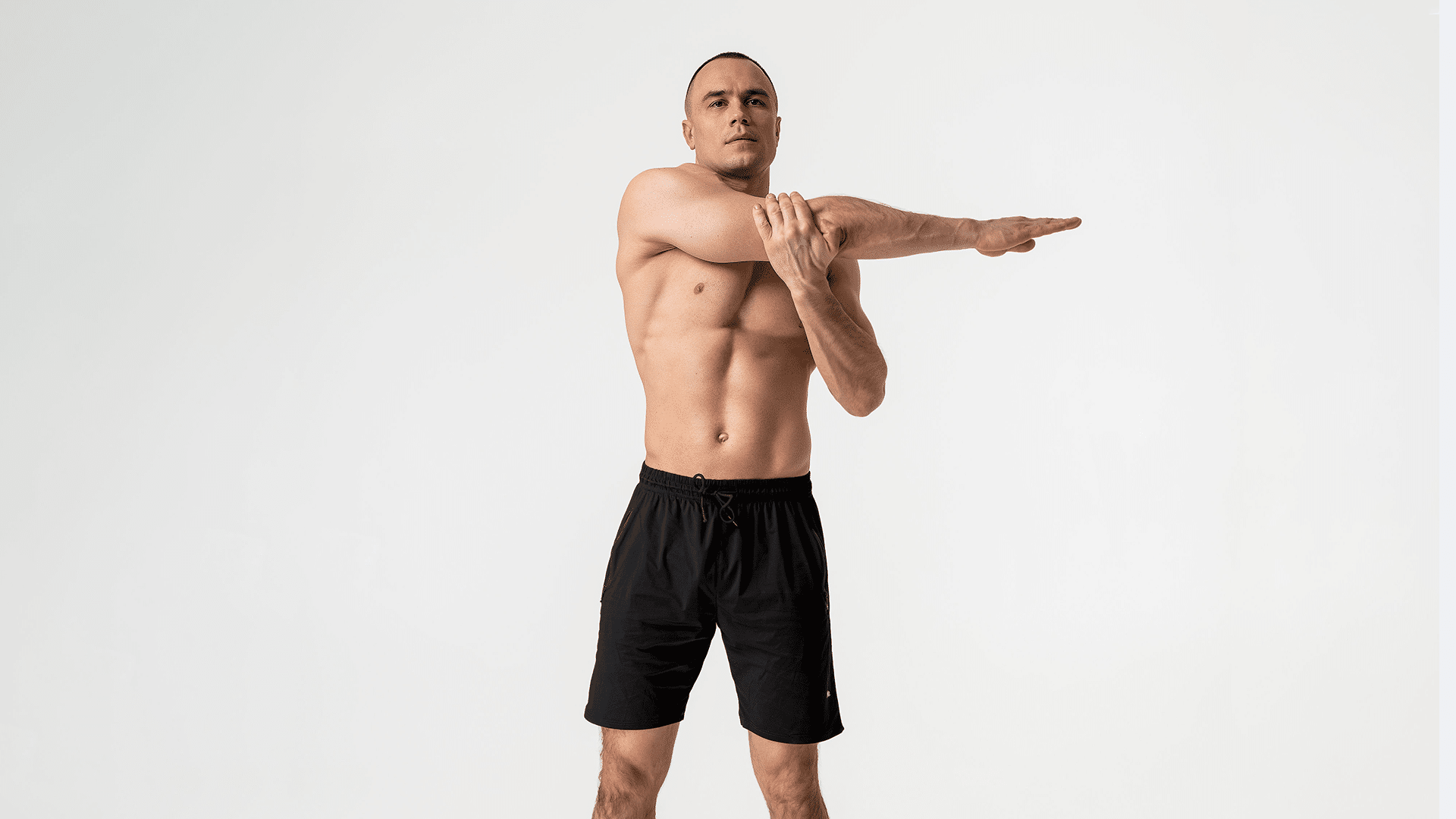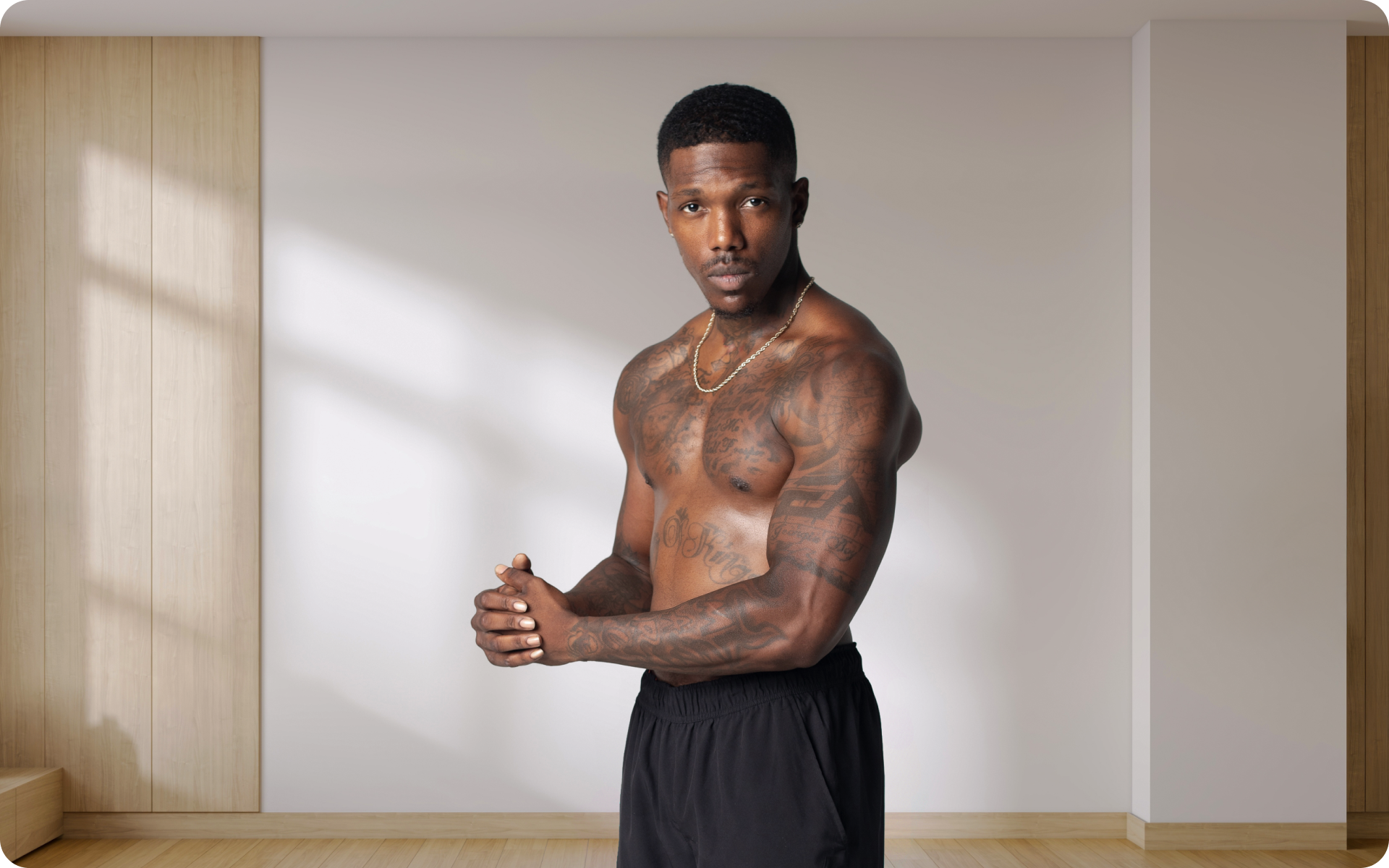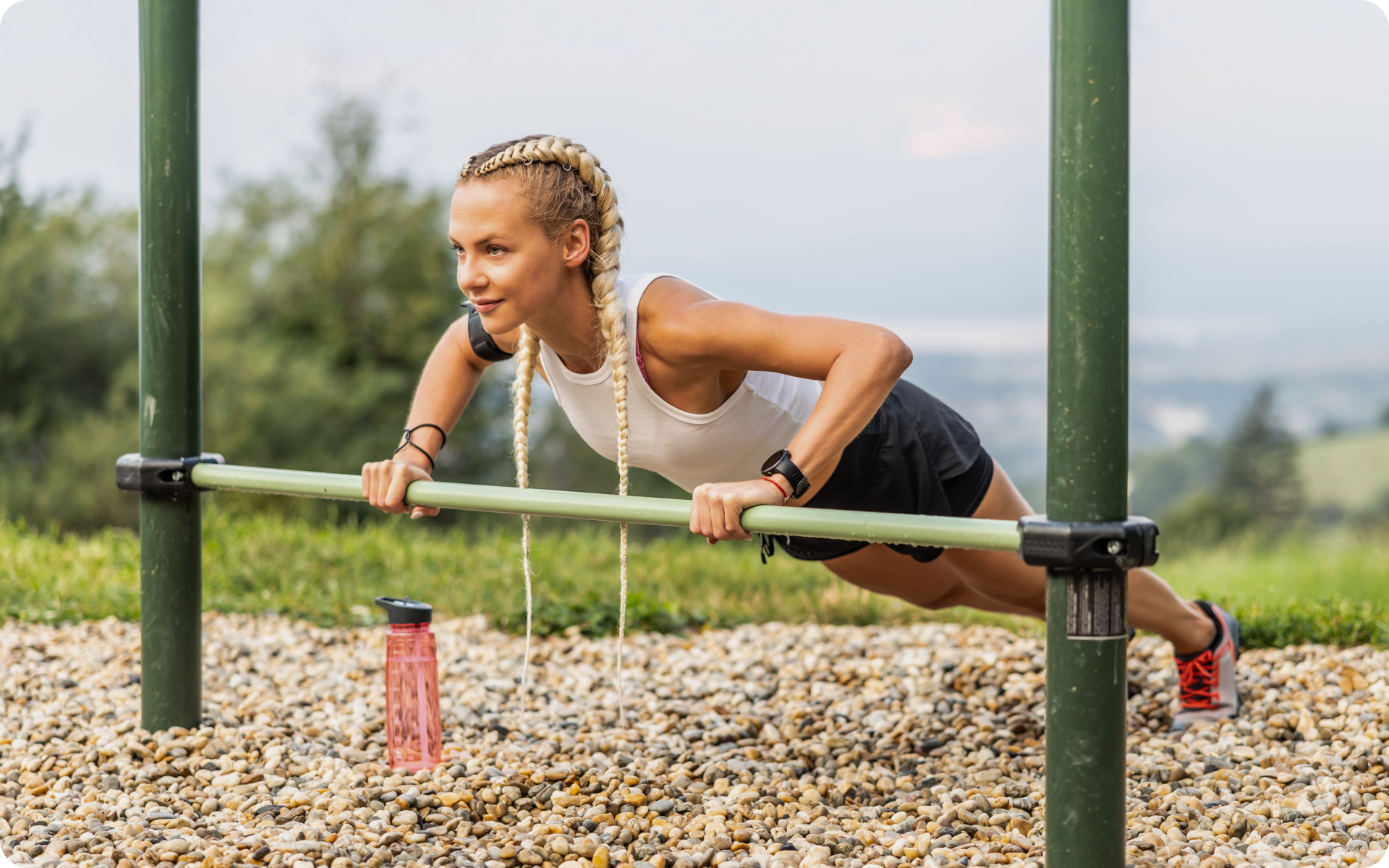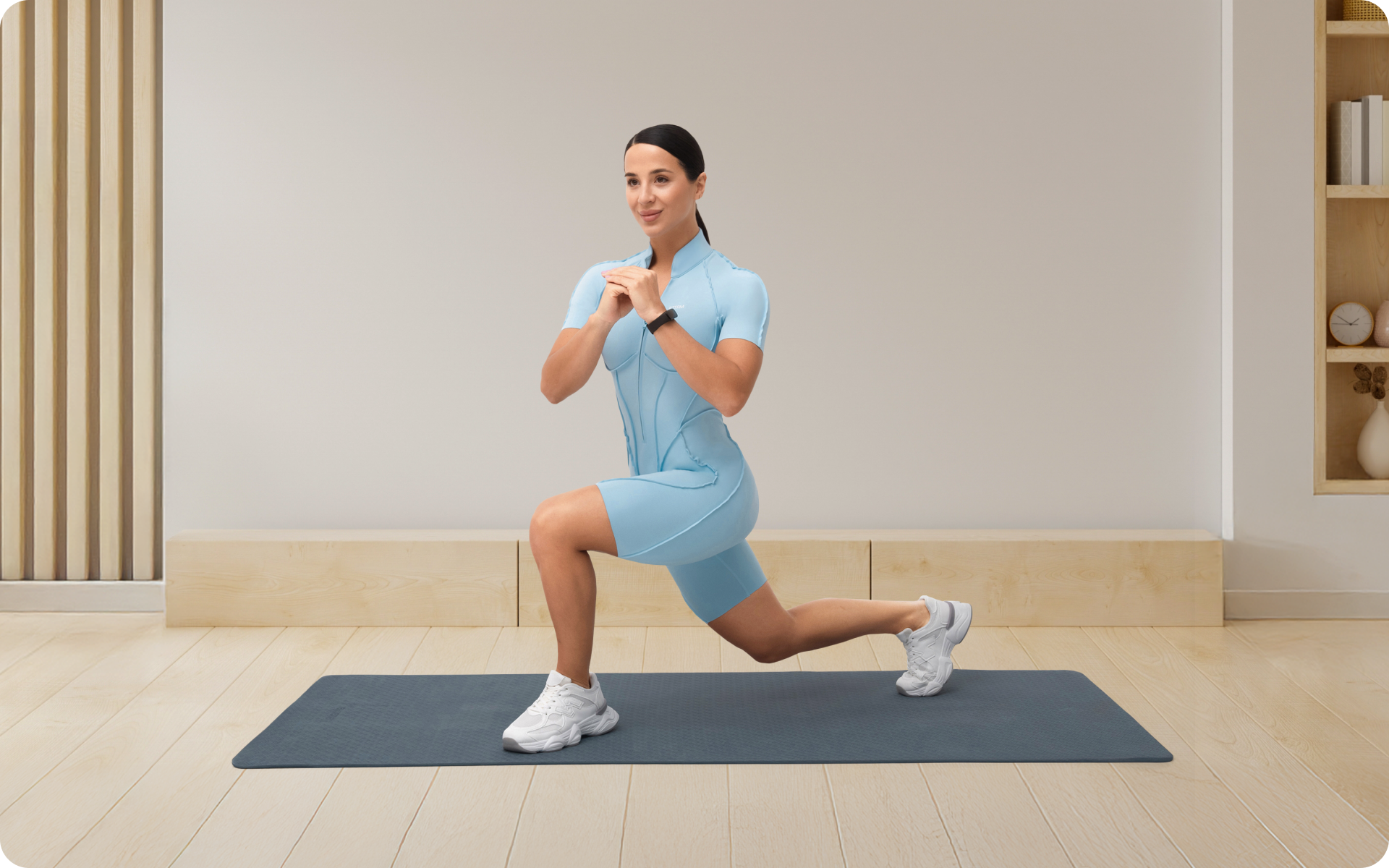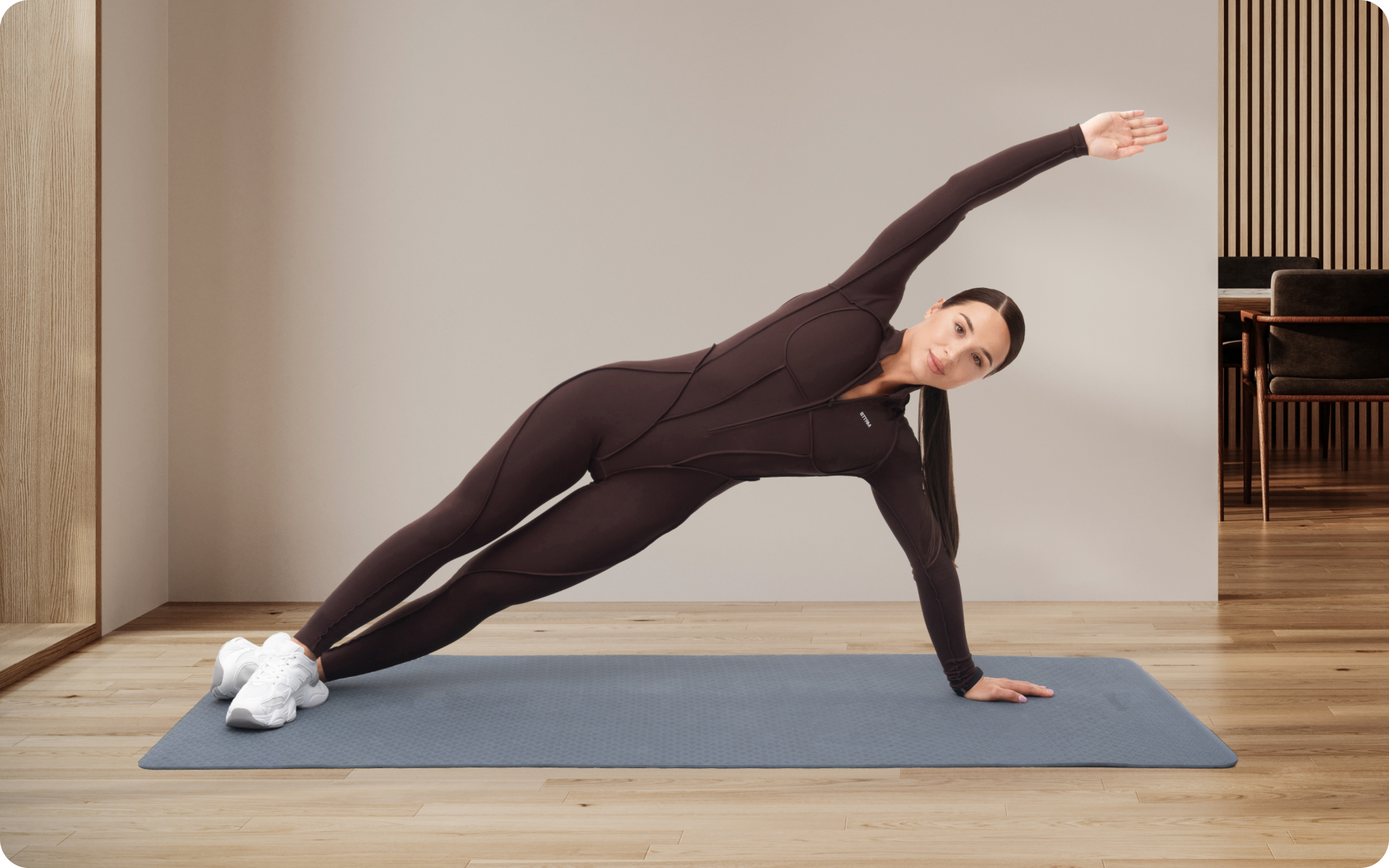Looking at Greek statues gives one a hint at the kind of physique the ancients valued: strong, functional, and aesthetically pleasing. The name Calisthenics is made up of two Greek words. The first word, ‘kalos,’ means ‘beautiful,’ and the second, ‘sthenos,’ means ‘strength.’
Drawing from this etymology, we gather that Calisthenics is fundamentally about achieving physical grace and power through movement. The goal should be to build a body that’s not only capable and resilient but also beautifully proportioned.
It’s worth noting that in ancient Greek society, men, women, and children were encouraged to practice these exercises.
No matter your current fitness level or what level of strength you aspire to, you’ll want to use this guide to navigate the basics of Calisthenics and learn how to incorporate this time-honored practice into your routine for comprehensive physical development.
What Are The Basic Principles of Calisthenics?
Six widely accepted principles form the foundation of Calisthenics; strict form and technique, range of motion, time under tension, progressive overload, compound exercises, isometrics, and consistency.
Strict Form and Technique
Maintaining strict form and technique is pivotal in Calisthenics for a couple of reasons. It ensures that the correct muscle groups are activated, which can prevent injuries and enables more efficient movement.
Furthermore, proper form ensures that each exercise is as effective as possible, leading to better strength gains and muscle development.
Note that when we talk about form, we’re referring to the alignment of different body parts during an exercise.
For example, when performing a push-up, your body should form a straight line from your shoulders to your ankles, engaging your core and glutes to prevent your hips from sagging or forming a pike position.
Additionally, your elbows should form a 45-degree angle to your body, rather than flaring outwards, to protect your shoulders from strain.
Technique goes hand-in-hand with form and includes the specific details of executing a movement. Taking the push-up example further, an effective technique involves lowering your whole body as a single unit to just above the floor before pushing back up, ensuring that the chest, rather than the stomach, comes closest to the floor.
In Calisthenics, it’s not just about the number of repetitions you can do, but how well you can perform them. Sacrificing form and technique for the sake of performing more reps can lead to muscle compensation, imbalances and injuries.
Learning and adhering to the proper form and technique from the beginning builds a foundation that allows for more advanced movements in the future.
For more detailed information, take a look at our previous post – Does Calisthenics Build Muscle? A Dive Into Scientific Evidence.
Range of Motion
The range of motion (ROM) refers to the distance a joint can move from full extension to full flexion (4). In Calisthenics, achieving a full ROM is essential for maximizing strength and muscle gains.
Not only does a full ROM activate more muscle fibers, but it also ensures that all muscles involved in an exercise reach their full movement capability.
For example, in a pull-up, a full ROM involves starting from a fully extended arm position and pulling up until your chin is above the bar. This engages not only the biceps but also the back muscles.
Furthermore, working on increasing your range of motion can improve flexibility and mobility, making it easier to perform complex movements and prevent injuries (4).
Lean and toned up body isn’t just a far-fetched fantasy. Check out the BetterMe app and watch it propel your weight loss journey into high gear!
Time Under Tension
Time under tension (TUT) is the amount of time a muscle is placed under stress during an exercise (2). In Calisthenics this can be achieved by increasing reps, incorporating pauses or slowing down the tempo of an exercise.
Increasing TUT challenges the muscles and forces them to adapt, leading to strength gains and muscular endurance (2). Additionally, it allows for a deeper mind-muscle connection, where you can focus on engaging and activating specific muscles throughout an exercise.
Isometric exercises, where there is no movement but a constant tension on the muscle, are also a crucial aspect of Calisthenics and contribute to TUT.
Progressive Overload
Progressive overload is an essential principle in any strength training program. It involves gradually increasing the difficulty of an exercise as your body adapts and becomes stronger (3).
In Calisthenics, this can be achieved by adding reps or trying more challenging variations of an exercise.
For example, once you can comfortably perform 10 push-ups with proper form and a full ROM, you can progress to incline push-ups or diamond push-ups to continue challenging your muscles.
Consistently increasing progressive overload is what leads to significant strength gains and muscle development over time.
Compound Exercises
Calisthenics is primarily made up of compound exercises, where multiple muscle groups are activated simultaneously. This not only makes for more efficient workouts but also leads to functional strength and coordination.
Compound exercises mimic everyday movements, making them practical for real-life activities (1). Additionally, they involve the core muscles for stability and support, leading to a strong and stable core.
Examples of compound exercises in Calisthenics include pull-ups, push-ups, and squats.
Consistency
Lastly, consistency is a must when it comes to seeing progress in Calisthenics. As with any physical endeavor, regular practice leads to improvement over time.
Consistency also helps build discipline and a routine, making it easier to stick with your Calisthenics journey and achieve your goals. It’s really important to stay dedicated and motivated, even on days when you may not feel like working out.
Read more: The Simplest Lower Back Calisthenics Guide for Beginners
What Are The Basic Exercises for Calisthenics?
The basic calisthenics exercises list is quite brief; push-ups, pull-ups, squats, lunges, dips, and planks. However, there are countless variations of each exercise that can be incorporated to target different muscle groups or increase difficulty.
Here is a breakdown of the basic exercises and their primary muscle groups:
- Push-Ups: chest (pectorals), shoulders (deltoids), triceps
- Pull-Ups: back (latissimus dorsi, rhomboids), biceps
- Squats: quadriceps, hamstrings, glutes
- Lunges: quadriceps, hamstrings, glutes
- Dips: chest (pectorals), shoulders (deltoids), triceps
- Planks: core muscles (rectus abdominis, obliques, transverse abdominis)
Although the exercises listed above are called “basic” many beginners may find them challenging at first. Here’s how to perform the basic exercises, with a few notes about regressions for beginners and progressions for advanced levels:
Push-Ups
Push-ups are a quintessential exercise in calisthenics for building upper body strength, targeting the chest, shoulders, and triceps. The core and lower back are also engaged when performed correctly, promoting functional fitness that translates into everyday activities.
Steps:
- Begin in a high plank position with your hands planted firmly on the ground, slightly wider than shoulder-width apart.
- Keep your body in a straight line from your head to your heels, engaging your core and glutes.
- Lower your body down until your chest nearly touches the floor, keeping your elbows at a 45-degree angle.
- Push through your hands, extending your elbows to return to the starting position.
Beginner Regression: Incline Push-Ups can be done by placing your hands on an elevated surface, such as a bench or step, which reduces the amount of body weight you have to lift against gravity.
Advanced Progression: Weighted Push-Ups involve adding extra weight via a weighted vest or placing a plate on your back to increase the resistance, thereby challenging your muscles further.
Pull-Ups
Pull-ups are effective for developing back and biceps strength, enhancing one’s ability to lift their own body weight, which is vital for functional fitness. They also engage the core and improve grip strength and shoulder stability.
Steps:
- Grip the pull-up bar with your palms facing away from you, hands slightly wider than shoulder-width apart.
- Hang from the bar with your arms fully extended and your legs straight or slightly bent to avoid touching the ground.
- Pull yourself up by drawing your elbows down to the floor until your chin passes the bar.
- Lower yourself back down with controlled movement to the starting position.
Beginner Regression: Straight Arm Plank Hold can be used to cultivate strength and stability in the shoulders and core before attempting pull-ups.
Advanced Progression: Muscle-Ups combine a pull-up with a dip to transition from hanging below the bar to supporting yourself above it, requiring significant strength and coordination.
Squats
Squats develop lower body strength, particularly in the quadriceps, hamstrings, and glutes. They are also beneficial for core stability and encourage mobility and balance, which are key components of functional fitness.
Steps:
- Stand with your feet shoulder-width apart, toes slightly pointed outwards.
- Extend your arms straight out in front of you for balance.
- Keeping your back straight and core braced, bend at your knees and hips to lower your body down as if you were sitting back into a chair.
- Go down until your thighs are at least parallel to the ground, making sure that your knees do not cave inwards.
- Drive through your heels to return to the starting position, fully extending your hips and knees.
Beginner Regression: Bodyweight Squats or Chair Squats can be performed where the range of motion is limited, and support is provided by sitting down on a chair or bench and standing back up.
Advanced Progression: Pistol Squats are a one-legged squat variation that greatly challenges balance, coordination, and unilateral (single-leg) strength.
Looking for a way to break the vicious cycle of weight loss and tone up all the jiggly parts? Watch the extra pounds fly off and your muscles firm up with the BetterMe app!
Dips
Dips are an effective calisthenics exercise that targets the upper body, specifically the triceps, chest, and the front of the shoulders, known as the anterior deltoids. They are crucial for developing pushing strength and enhancing the stability of the shoulder girdle for functional movements like lifting objects overhead or pushing on doors.
Steps:
- Position yourself between dip bars or parallel surfaces you can grip.
- Grasp the bars and hoist yourself up to an initial position with your arms fully extended and shoulders directly above your hands.
- Lower your body by bending your elbows, keeping them pointed backward and close to your body.
- Descend until your elbows are bent at a 90-degree angle and your shoulders are slightly below your elbows.
- Push through your palms to extend your arms and lift your body back to the starting position.
Beginner Regression: As a beginner-friendly alternative, Modified Tricep Dips can be performed. These utilize a bench or chair, where one places hands on the edge of the bench with feet extended out in front of them touching the floor. Dip down until your buttocks come close to the floor and then press back up. Adjust feet position to increase or decrease intensity. Advanced Progression: For advanced practitioners, developing the strength and balance to perform handstands provides a significant challenge, transitioning the focus to the shoulders and core and preparing for the rigors of Handstand Push-Ups.
Plank
The Plank exercise is a core-stabilization movement that targets the entire abdominal region, including the rectus abdominis, obliques, and transverse abdominis. It is essential for building endurance in the core muscles, which are pivotal for maintaining proper posture and reducing lower back pain in daily life.
Steps:
- Start in a prone position on the floor with your forearms flat and elbows aligned below the shoulders.
- Push up off the floor, raising your body to form a straight line from your head to your heels.
- Keep your core tightly engaged, and make sure your body remains flat, like a plank. Avoid lifting your hips too high or letting them sag.
- Hold this position for the desired amount of time, maintaining steady breathing.
Beginner Regression: To build up to a full plank, you can focus on an Elevated Plank with hands or forearms on an elevated surface such as a bench or step.
Advanced Progression: Progressing to Plank Hip Dips will increase the demand on the core while also adding rotation.
Chin-Ups
Chin-Ups focus on strengthening the upper body, particularly the biceps, forearms, and back muscles. They enhance grip strength and are essential for any movement that involves pulling something towards the body or pulling the body up, like climbing.
Steps:
- Grip the chin-up bar with palms facing you at about shoulder-width apart.
- Start by hanging with your arms extended, shoulders down and back, and core engaged.
- Pull your body up towards the bar by engaging your lats and bending at the elbows
- Continue to lift yourself until your chin is over the bar.
- Lower back down with control to the full hang position.
Beginner Regression: Beginners can start with Inverted Rows with an underhand grip, which helps build strength in a bodyweight pulling motion, without having to lift one’s entire bodyweight.
Advanced Progression: Graduating to performing Back Levers can dramatically increase the complexity, introducing a horizontal pull that engages the back differently and incorporates core stability. This advanced gymnastic movement involves hanging from a bar and rotating the body into a fully extended, face-down position and then back again.
Wide-Grip Pull-Ups
Wide-Grip Pull-Ups are a fundamental calisthenics exercise that magnifies the emphasis on the lats, broadening the upper back and boosting functional pull strength. The position of the arms also encourages a greater activation of the shoulder muscles, contributing to a well-rounded upper body physique.
Steps:
- Position your hands wider than shoulder-width on the pull-up bar, palms facing away from you.
- Hang from the bar with your arms fully extended.
- Engage your core and pull your body up by driving your elbows towards the ground, keeping your body straight.
- Aim to raise your body until your chest reaches the bar.
- Lower back to the initial position in a controlled manner.
Beginner Regression: For beginners, similar to Chin-ups regression, you will focus on Inverted Rows with a wide overhand grip.
Advanced Progression: For those seeking a greater challenge, Front Levers will not only test your back’s pulling strength but also demand rigorous core engagement and exceptional body control.
Tuck Planche
The Tuck Planche builds remarkable core strength and shoulder stability by holding the body in a suspended and tucked position above the ground. It is beneficial for enhancing balance and coordination, vital aspects of functional fitness in calisthenics.
Steps:
- Start in a deep squat position with your hands placed on the floor in front of you, shoulder-width apart.
- Lean forward, transferring your weight onto your hands.
- Keep your arms straight, engage your core, and lift your legs off the ground, tucking your knees into your chest.
- Hold your body parallel to the ground in this tucked position.
- Maintain the position for as long as possible with proper form.
Beginner Regression: For newcomers, mastering the push-up and plank will be vital in building the shoulder and core strength before attempting a Tuck Planche..
Advanced Progression: The advanced Hefesto exercise requires not just considerable upper body strength but also an advanced degree of bicep and back engagement, representing a significant leap in calisthenics prowess.
Assisted Handstands
Handstands are a dynamic calisthenics maneuver that improves upper body strength, particularly in the shoulders and arms, while also challenging balance and proprioceptive skills.
Steps:
- Face a wall and place your hands a few inches away from it, about shoulder-width apart.
- Kick up one leg at a time to bring your feet onto the wall for balance, entering an inverted position.
- Keep your arms straight, core tight and look at a spot on the ground to maintain balance.
- Hold the handstand with the assistance of the wall, keeping your body straight.
- To release, gently lower one leg at a time back to the ground.
Beginner Regression: Push-ups and Tricep Dips are foundational exercises that build upper body strength and stability, essential for the successful execution and control of a handstand.
Advanced Progression: Once proficient in handstands, transitioning to One Arm Push-Ups provides a formidable challenge, involving extraordinary balance and unilateral arm strength.
Read more: Calisthenics Shoulder Exercises: Techniques and Workouts
Low Rep Muscle-Ups
Low Rep Muscle-Ups are a compound exercise that combines a high pull-up transition into a dip, targeting the entire upper body and requiring significant strength and coordination.
Steps:
- Begin by hanging from a pull-up bar.
- Execute a pull-up with enough power to transition your torso above the bar.
- At the peak of the pull-up, quickly rotate your wrists over the bar and straighten your arms to enter the dip phase.
- Push down on the bar to extend your arms fully, lifting your body above the bar.
- Lower yourself back down in a controlled manner and repeat for a low number of reps focusing on form.
Beginner Regression: Kipping Pull-ups can assist beginners in building the form and upper body strength required for the explosive power of low rep Muscle-Ups.
Advanced Progression: The Planche is an advanced gymnastics skill that calls for incredible core strength and total body control, making it an elite progression from Muscle-Ups.
Is Calisthenics Only Bodyweight?
Calisthenics exercises primarily use bodyweight for resistance, however, weights can be incorporated to add difficulty and increase muscle development. This is particularly common in an advanced calisthenics workout plan, where individuals use weighted vests or belts to perform exercises such as pull-ups and dips.
The principle of progressive overload can be applied by incorporating additional weights over time to continue challenging the body and promoting muscle growth (3).
Nevertheless, calisthenics remains a predominantly bodyweight-based form of exercise, rooted in functional strength and controlling one’s own body through various movements.
Curious about Calisthenics for fat loss, take a look at our blog – Does Calisthenics Burn Fat?
How Do Beginners Start Calisthenics?
Calisthenics can be intimidating for beginners, but it’s essential to start with the basics and progress gradually. Here are some steps that newcomers should follow:
- Build a foundation of strength: Begin by performing simple bodyweight exercises such as squats, push-ups, and lunges to build a base level of strength.
- Focus on form over quantity: Quality is more important than quantity in calisthenics. Make sure proper form is maintained throughout each exercise to prevent injury and maximize muscle recruitment.
- Start with regressions: If a specific exercise is too challenging, start with a regression that builds the necessary strength and technique before progressing to the full movement.
- Incorporate rest days: Rest and recovery are crucial for progress in any form of fitness, including calisthenics. Allow for adequate rest between workouts to prevent burnout and injury (5).
- Seek guidance: Consider working with a coach or joining a calisthenics community to receive guidance on proper form, progressions, and programming that aligns with your goals.
You may find more information to tailor your routine in our: Calisthenics Body Type guide
Is Calisthenics Hard for Beginners?
Calisthenics can be challenging for beginners, especially if they are new to strength training and bodyweight exercises.
Many of the foundational movements in calisthenics, such as push-ups and squats, may seem simple but require a significant amount of strength and control to execute correctly.
Beginners may struggle with proper form and completing multiple reps, but incorporating regressions can help build strength and technique over time.
FAQs
How Do I Teach Myself Calisthenics?
Explore Calisthenics basics for Beginners guide to learn the fundamental movements and progressions. Consider working with a coach or joining a calisthenics community for guidance on proper form and programming.
How Do I Start Calisthenics from Zero?
Start by building a foundation of strength through basic bodyweight exercises and focusing on proper form. Incorporate regressions for more challenging exercises and seek guidance from a coach or community for tailored programming.
Make sure to incorporate rest days and listen to your body to avoid burnout or injury.
What Calisthenics Skill Should I Learn First?
Start with the foundational movements, such as push-ups, squats, and lunges, before progressing to more advanced skills like handstands or muscle-ups. It is important to build a strong foundation of strength and technique before attempting more challenging movements.
The Bottom Line
Calisthenics is a versatile and effective form of exercise that can be tailored to all fitness levels. Beginners should start with the basics and focus on proper form before progressing to more advanced skills. Incorporating weights helps increase difficulty and promote muscle growth, but bodyweight exercises remain at the core of calisthenics training.
DISCLAIMER:
This article is intended for general informational purposes only and does not serve to address individual circumstances. It is not a substitute for professional advice or help and should not be relied on for making any kind of decision-making. Any action taken as a direct or indirect result of the information in this article is entirely at your own risk and is your sole responsibility.
BetterMe, its content staff, and its medical advisors accept no responsibility for inaccuracies, errors, misstatements, inconsistencies, or omissions and specifically disclaim any liability, loss or risk, personal, professional or otherwise, which may be incurred as a consequence, directly or indirectly, of the use and/or application of any content.
You should always seek the advice of your physician or other qualified health provider with any questions you may have regarding a medical condition or your specific situation. Never disregard professional medical advice or delay seeking it because of BetterMe content. If you suspect or think you may have a medical emergency, call your doctor.
SOURCES
- Compound Exercises – Physiopedia (n.d., physio-pedia.com)
- Dynamic Training Volume: A Construct of Both Time Under Tension and Volume Load (2006, ncbi.nlm.nih.gov)
- Progressive overload without progressing load? The effects of load or repetition progression on muscular adaptations (2022, ncbi.nlm.nih.gov)
- Range of Motion – Physiopedia (n.d., physio-pedia.com)
- Recovery Strategies: The Secret to Maximizing Workouts (2021, acefitness.org)





